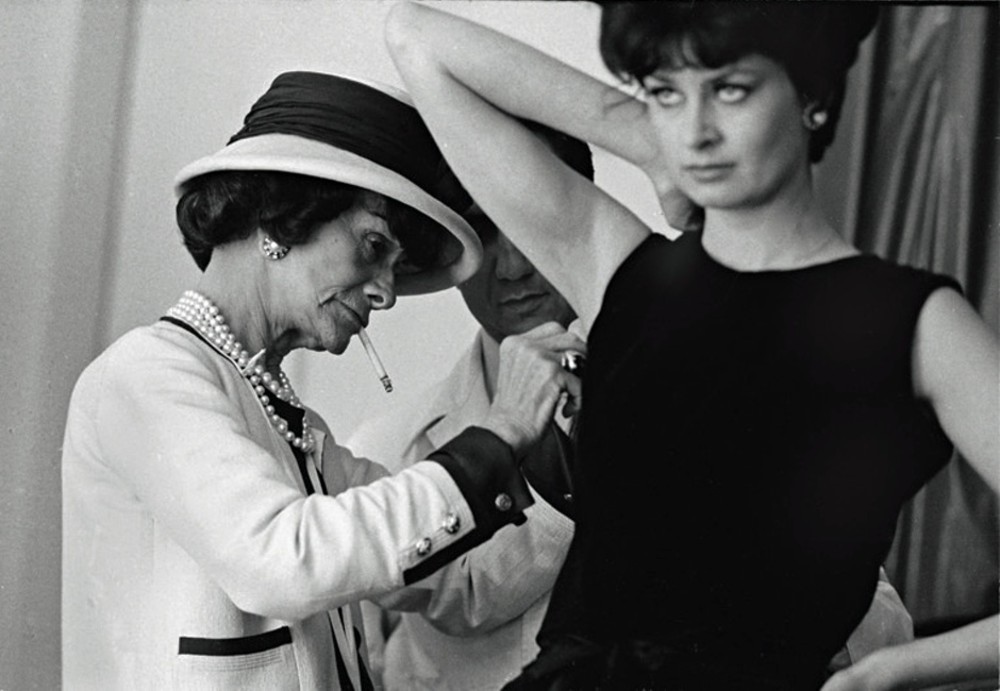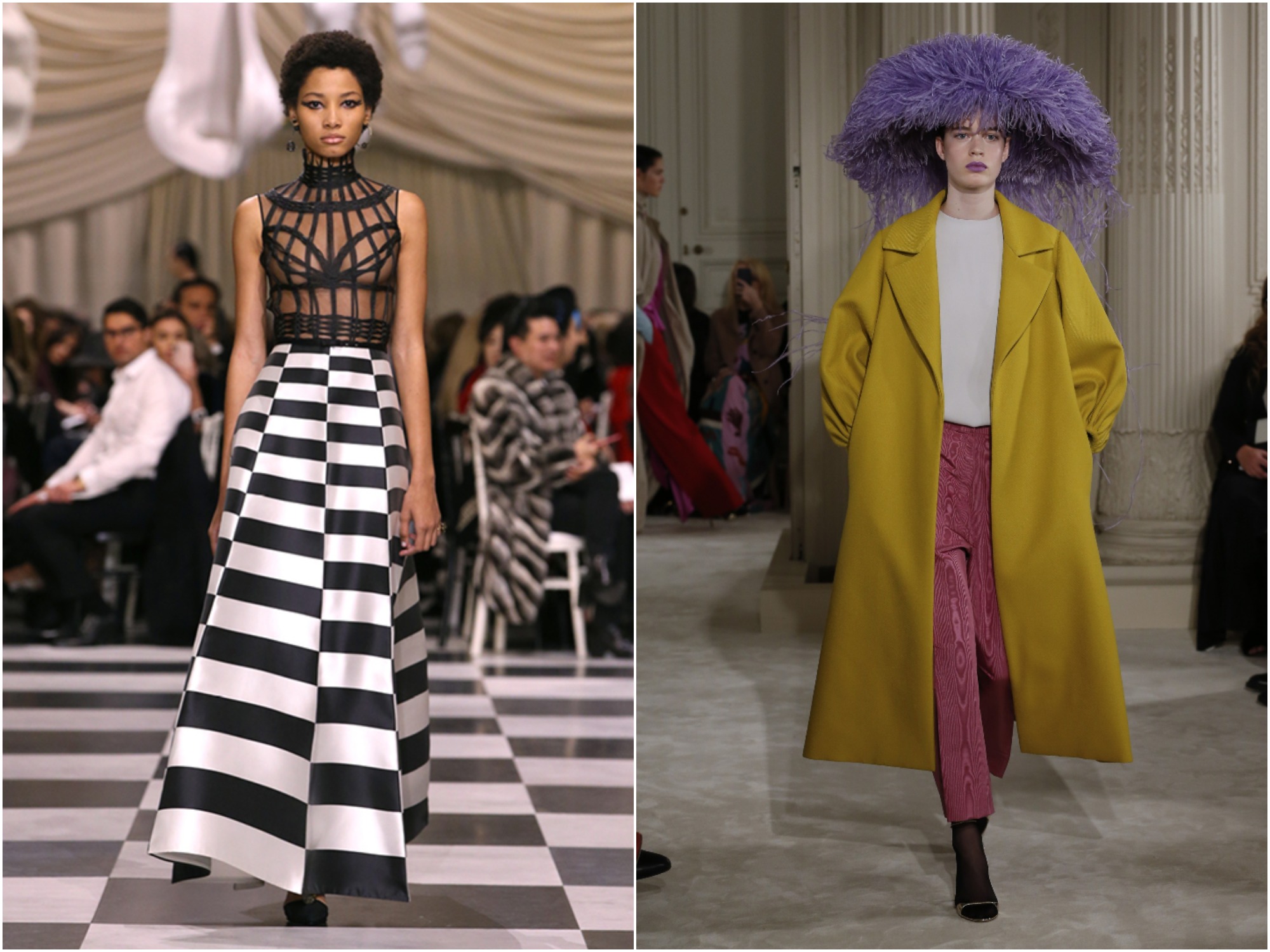Rosie Best explains how Chanel’s latest exploits address their own reliance on problematic models of femininity
Chanel was established by Gabrielle ‘Coco’ Chanel in 1909 as a small hat shop in central Paris and, as a brand, has grown obsessed with its female heritage. On the company’s website we can ‘See the Story’ of Gabrielle Chanel in no less than twenty-one short films, on the Chanel YouTube channel a series of videos reminisce about what Gabrielle “used to say”, and new ranges of handbags and perfumes constantly reapply the creator’s names to their various marketing ploys.

But in recent years the brand has struggled to marry its legacy with a wider, problematic depiction of the female figure and in its latest creations, turns to irony to represent and understand this conflict.
In seminal feminist text The Beauty Myth, Naomi Wolf explains how “images of female beauty [are] used as a political weapon against women’s advancement”. In one chapter she writes that ageing in women is not considered beautiful because of its association with wisdom and power. For this reason, in recent years the image of the happy, middle-aged housewife has been displaced in the media by women that are “gaunt [and] youthful”.
It is this image in particular that Chanel relies so heavily upon. But rather than denying this reliance, in its recent endeavours Chanel has addressed it in everything from its fabrics and colours to its choice of catwalk locations. With this self-referential stance the Chanel brand highlights its dissatisfaction, expressing a desire that youth and, by extension, the fashion industry’s standards, be de-problematized.
This ironic self-reference is a distinctly contemporary tool and in recent months the rise of ‘millenial pink’ – a colour which reclaims its own prettiness – has encapsulated this for the mass market. Indeed, Chanel’s latest haute couture collection – showcased in Paris on 22nd January – drew upon this colour extensively, echoing its desire for de-problematization. In this collection light, baby pinks were paired with similarly delicate silvers, creams, lilacs and whites; soft, fluffy shawls were worn over dresses; and tiny pinkish-orange flowers covered fabrics. Every model also wore a small circular bouquet of fabric flowers on the very top of her head, recalling the oversized flowery headbands of baby girls. Fr me, these headdresses seemed to draw special attention to a shared lack of agency in both children and models, all of whom are clothed by other people.

Chanel’s 2018 collection abounds with motifs, colours and textures that for many of us will recall the clothes we were put into as small children. The soft lines and colours of Chanel’s garments carry the same associations as these – the expectations of meekness and inoffensiveness in women. The extensive use of translucent material by Chanel’s designers – layered tulle and finely-detailed lace – seem to hyperbolise this, creating items that blend into the similarly light surroundings and translucent architecture of the Grand Palais.
Compare this collection with the work of other designers this year and Chanel’s difference is clear. Dior’s Spring-Summer Haute Couture show featured an array of distinctive monochrome pieces, and Valentino’s collection used bold silhouettes and frequent splashes of clashing colours including bright reds, turquoises and greens and eye-watering, mustard yellows.

Importantly however, on the Chanel catwalk every model’s pastel-coloured outfit was combined with a black net veil worn over the face. Perhaps an allusion to the Time’s Up movement, this added a touch of gravity to the outfits and troubled the otherwise gentle colours, especially their associations with innocence.

Inside the Grand Palais itself, foliage, water fountains and luscious lawns created a rose garden of light pink and white flowers and a trellised runway. This amplified the floral patterns of the women’s clothes but in its specific choice of roses Chanel referred to its industry’s conflated interest in both the infantilization and sexualization of women: while rosebuds carry connotations of youthfulness and naivety, fully-fledged roses on the other hand signal mature sexuality (see William Blake’s poem ‘The Rose’).
The awareness in fashion houses of their industry’s infantilization of women is also evident in the models they recruit: Kate Moss, Karlie Kloss and Kendall Jenner all began their modelling careers aged just fourteen, while Naomi Campbell was scouted aged fifteen and Cara Delevigne at seventeen. Following in their footsteps, in 2015 sixteen-year-old Lily Rose Depp (daughter of Vanessa Paradis and Johnny Depp) became the latest Chanel eyewear model, appearing in photographs that paired her light pink, frilly, flowery dresses with a pale blue background to exaggerate her youth. One year on and Depp was also the “incarnation” of the brand’s latest perfume – No 5 L’eau – in a new advert, and the face of a new line of lip glosses.
In the case of Depp and many other young models, they represent a youthful ideal to which Chanel’s consumers aspire when they purchase a product.

However, a more recent advertisement directed by Ringan Ledwidge for Chanel’s Gabrielle perfume instead stars twenty-seven year old Kristen Stewart – a figure much closer to the age of Chanel’s customers. In this advert Stewart begins entwined in a web of thin white fabric, curled up in the foetal position. She then opens her eyes, stretches out and tears through a membrane of fabric surrounding her, running virtually naked into a room lit with soft red lights and smashing through a glass wall into an open space. A clear allusion to childbirth, this advert’s level of self-reference is fascinating as it seems to respond to its predecessors’ obsession with youth.

Watching this, it doesn’t feel like we’re supposed to aspire to be like Stewart as we are Depp in her No 5 or lip gloss adverts. Instead, this advert’s much more literal and visceral interpretation of the infantilization expected of it indicates a discomfort with its genre and an attempt to transcend this, taking the industry’s obsession with youth in a new direction.








One thought on “Fashion and femininity at Chanel”